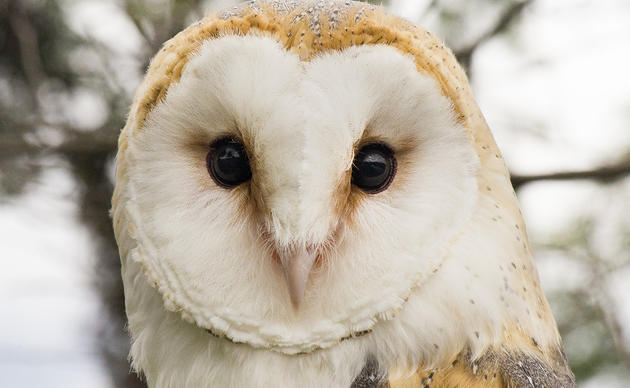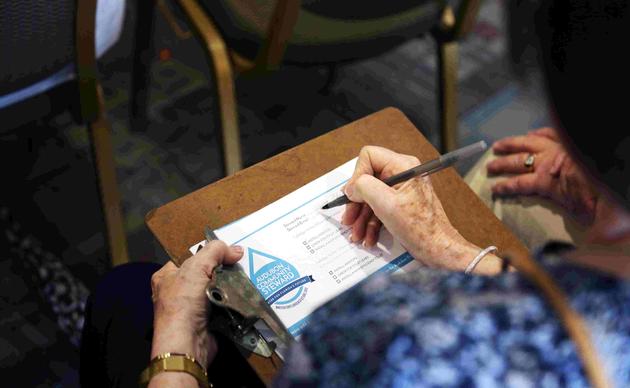The first thing I see when I walk into the Raptor Trauma Clinic for my morning of observation is a juvenile Bald Eagle in the lap of Raptor Conservation Specialist Sam Little. She’s holding it while another staff member cleans its kennel, a daily and important chore. Beth Lott, Raptor Specialist, carries a blue-lidded basket to the exam table. She lifts the lid, revealing a puddle of feathers and fluff, blinking eyes, and tiny beaks: half a dozen Eastern Screech-Owl babies look up at us, ready for breakfast. On the menu today, like every day for these birds of prey, is mice. Beth efficiently scoops chunk after chunk into each owlet’s mouth, pausing when one of the babies spits out a bite and when another hops up onto the basket’s rim. It’s a lot like feeding young humans (see also: herding cats).
It's just another day during busy baby season, when staff see hundreds of young raptors and release as many as possible back into the wild. My behind-the-scenes peek reveals not only all the effort and coordination that goes into this special time of year, but how the community can help these birds.
As I’m focused on the feeding frenzy, team members Tabby Smith and Cameron Couvillon each hold “birdie burritos,” in this case a pair of hawks wrapped in towels for safe and easy feeding and examination. The mood in the clinic is like any workplace: light banter, donuts in the break room, the calm chaos of a team that knows exactly what they’re doing. Medicine dosages and servings of food sit on a cold metal table, labeled with each patient’s ID number on a sticky note. As they finish with each bird, staff makes notes on a clipboard and in the Clinic computers. It’s important to track each patient’s weight and any changes in behavior, as these will be used to determine when a bird can be released.
At some point, Beth answers a call from a volunteer -- she’s bringing in a pair of baby Barred Owls from another rehabilitator. When they arrive 30 minutes later in two cardboard kennels, Beth is in the middle of feeding yet another batch of Eastern Screech-Owls. Holly, the volunteer, jumps right in and begins washing equipment in the sink. When it’s time to examine the Barred Owls, Beth and Cameron work together to inspect their ears, enormous eyes, wings, beaks, and overall health. The larger of the two is dehydrated, so they inject fluids under the skin of its fluffy-feathered legs. Beth is relieved that the pair are in decent condition with no injuries – this spells a short stay in the busy Clinic.
As I close out the morning, my head is spinning as I try to count the total number of birds I’ve seen today. It’s close to 30, at least. But what impresses me more than the quantity of patients is the level of care they receive from staff. Some patients, like the pair of Barred Owls that just arrived, will have a very brief stay in the Raptor Trauma Clinic, and others, like some of the eagles that Cameron and volunteer Cheryl Merz are cleaning and feeding, have been here for weeks. Baby season is only just beginning, and though it’s been a busy morning, the Clinic isn’t yet at capacity. Through all this, one thing is clear to me: the needs of these sick and injured birds will always come first for Clinic staff. I leave in time for lunch, and though everyone in the Clinic arrived before me, nobody else seems worried about theirs. At least not until every raptor’s belly is full.
Audubon protects birds and the places they need. In the Raptor Trauma Clinic, that means treating individual raptors and returning them to the wild places from which they came. Each bird returned to the wild is a small but crucial piece of the conservation puzzle.
You can support the Clinic team and the patients in their care this baby season. Attend our Baby Owl Shower on Saturday, May 13, or send a gift from the wishlist!
Karina Jiménez is a Communications Associate for Audubon Florida.








